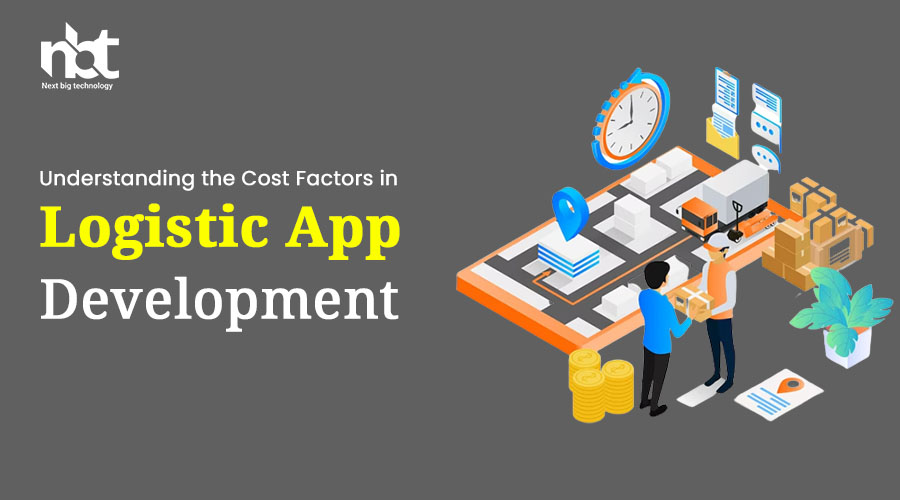Introduction: In the era of digital transformation, logistics companies are increasingly embracing technology to streamline their operations and enhance customer experiences. Logistic apps provide a convenient platform for managing logistics processes, including order tracking, inventory management, route optimization, and real-time communication. If you’re considering developing a logistic app, it’s essential to understand the various cost factors involved. In this blog, we will explore the key elements that influence the cost of logistic app development, enabling you to plan and budget your project effectively.
- App Features and Complexity: The complexity and breadth of features in your logistic app are primary factors influencing the development cost. Consider the functionalities you want to include, such as order management, shipment tracking, inventory management, driver management, route optimization, payment integration, reporting and analytics, and customer support. The more features and customization your app requires, the higher the development cost will be.
- Mobile Platforms and Devices: The choice of mobile platforms and devices impacts the cost of development. Developing a logistic app for a single platform, such as iOS or Android, may incur lower costs compared to developing for multiple platforms simultaneously. However, supporting multiple platforms can broaden your user base and enhance market reach. Additionally, consider the need for cross-platform development frameworks like React Native or Flutter, which can reduce development costs by sharing a single codebase across platforms.
- User Interface and User Experience (UI/UX): A visually appealing and intuitive user interface (UI) is crucial for a logistic app’s success. The UI/UX design influences how users interact with the app and impacts user satisfaction. Hiring professional UI/UX designers or design agencies can enhance the overall user experience but may increase the development cost. The number of screens, customization requirements, and responsiveness across different devices should be considered in estimating design-related costs.
- Backend Development: The backend of a logistic app plays a crucial role in managing data, processing requests, and integrating with external systems and APIs. The complexity of the backend depends on factors such as user authentication, data storage and retrieval, API integrations with logistics providers, order processing, notifications, and real-time tracking. Robust backend development ensures secure data transmission, scalability, and reliable performance, but it also adds to the development cost.
- Integration with Third-Party APIs: Logistic apps often require integration with various third-party APIs and services to provide comprehensive functionality. This includes integration with payment gateways, logistics providers’ APIs for real-time tracking, geolocation services, address verification APIs, and communication APIs for SMS or push notifications. The cost of integration depends on the complexity and number of integrations required, as well as any associated licensing fees or API usage costs.
- Security and Data Privacy: Logistic apps deal with sensitive data, including customer information, order details, and payment data. Implementing robust security measures is crucial to protect user data and prevent unauthorized access. This includes secure user authentication, data encryption, secure API communication, and adherence to data privacy regulations like GDPR or CCPA. The cost of security measures, such as implementing encryption protocols or conducting security audits, should be factored into the development budget.
- Quality Assurance and Testing: Thorough testing is essential to ensure the reliability and performance of your logistic app. Testing activities include functional testing, usability testing, performance testing, compatibility testing across different devices and operating systems, and security testing. Allocating resources for quality assurance and testing, including test environments, testing tools, and dedicated QA professionals, helps identify and address issues before the app is launched.
- Maintenance and Updates: Once your logistic app is launched, ongoing maintenance and updates are necessary to address bug fixes, security patches, and introduce new features or enhancements. Consider the cost of maintaining servers, cloud infrastructure, database backups, and periodic updates to keep the app secure and up to date. Regular monitoring and user feedback analysis will also help identify areas for improvement and further development.
- Project Management and Team Size: The size of your development team and the project management approach impact the overall cost. A larger development team with diverse expertise may accelerate the development process but can also increase costs. The project management approach, whether agile or traditional, affects the project timeline, resource allocation, and communication methods. Effective project management ensures timely delivery and helps control costs.
Conclusion: Developing a logistic app requires careful consideration of the cost factors involved. App features and complexity, mobile platform choices, UI/UX design, backend development, third-party API integrations, security measures, testing, maintenance, and project management all contribute to the overall development cost. By analyzing these factors and setting clear project requirements, you can effectively plan and budget for your logistic app development project. Collaborating with experienced app developers, UI/UX designers, and project managers can help optimize costs while delivering a high-quality and efficient logistic app that meets your business objectives.


















